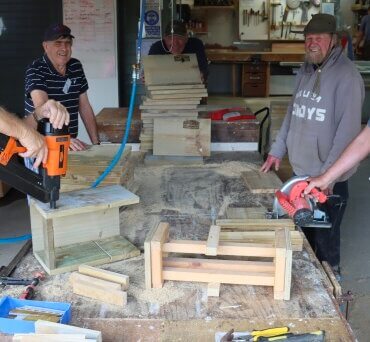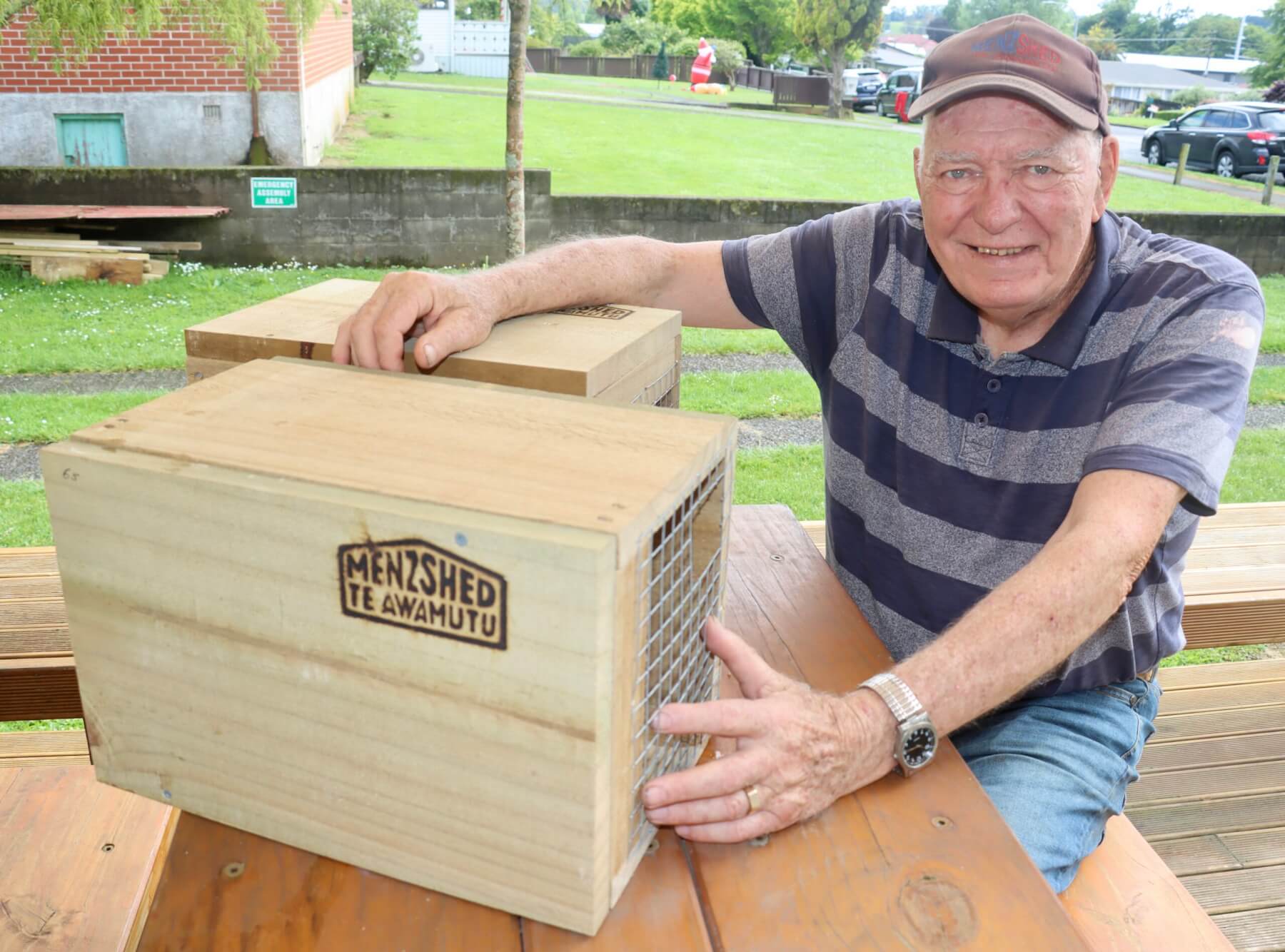

Malcolm Perano with an example of what one of the completed traps looks like. Photo: Jeremy Smith
It’s a trap – about 170 of them.
And they will this week be shared between two Waipā organisations working to protect the district’s wildlife.
The majority – about 120 traps – will be delivered to landowners between Sanctuary Mountain Maungatautari and Cambridge in an effort to provide both safe corridors for native birds which leave the mountain and the restoration planting happening.
They will be used by Go Eco in its Bush to Burbs initiative.
Of those 120 traps, the first 50 will be placed on the northern side of the maunga.
The remaining 50 will be given to those organising the Taiea te Taiao project, an initiative seeking to establish an ecological corridor between Maungatautari and Pirongia which last month marked 200,000 plantings in the two years it has been running.
Te Awamutu Menzshed members have been hard work building the traps as part of what’s thought to be one of the group’s biggest contracted projects this calendar year.
President Richard Cato said members were grateful because the profits would be put back into paying for the running costs of the shed.
Bush to Burbs is funded by Waikato Regional Council for three years, and the scheme is designed to support landowners with their predator control.
Go Eco biodiversity community coordinator Karen Barlow told The News the members’ high quality work was always “gratefully received”.
“Not only are the traps they make well built, but being wooden they are also environmentally friendly.”
“We are pleased to collaborate with these organisations and help in this way,” Cato said.
When The News visited the menzshed in Te Awamutu last week, a team of five members were manning the assembly line.
Meanwhile, sales of Te Awamutu Menzshed’s book Sheddies – which tells the stories of about 10 shed members – have remained steady since it was released in late October, Cato said.
There are several locations from which to purchase the book in town, or anyone wanting to get a copy can contact the menzshed directly.








